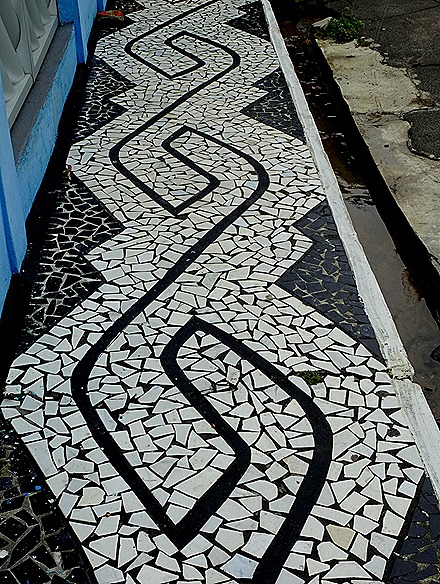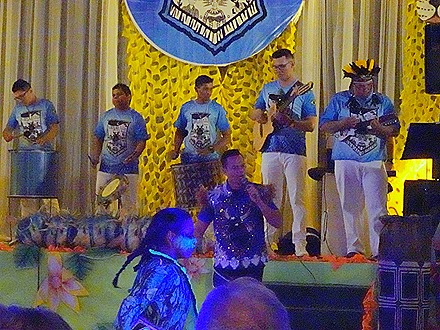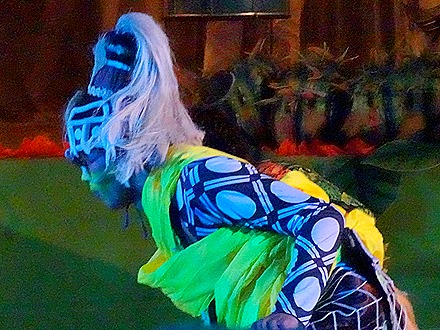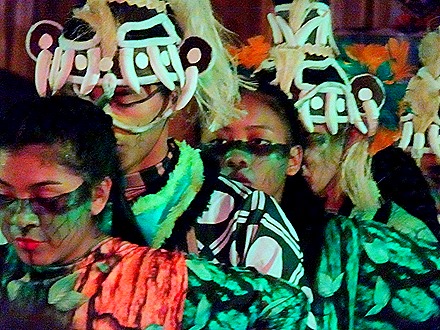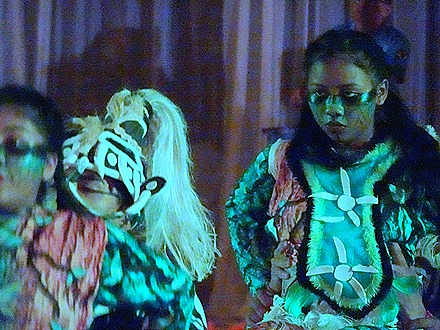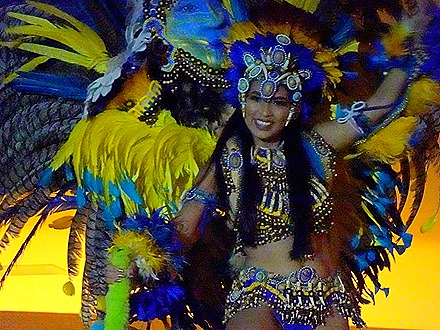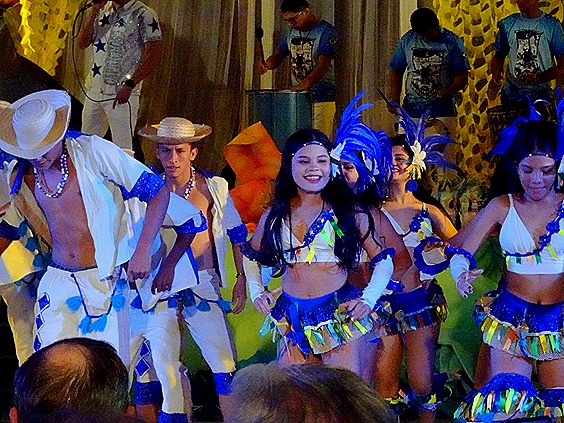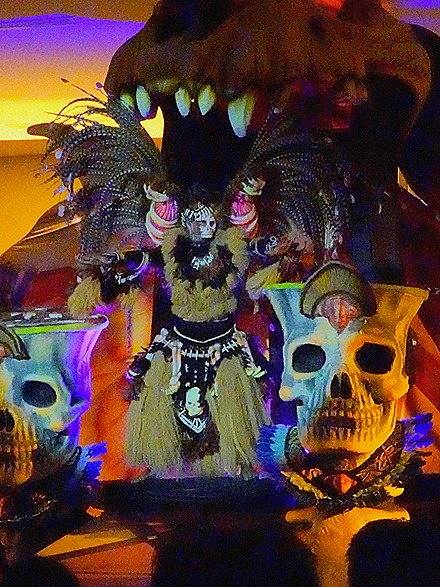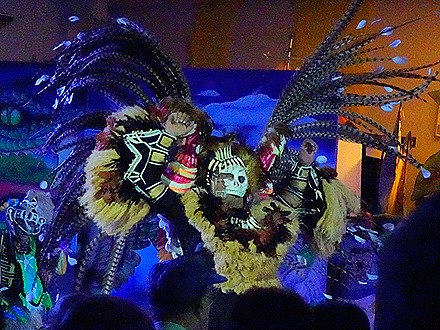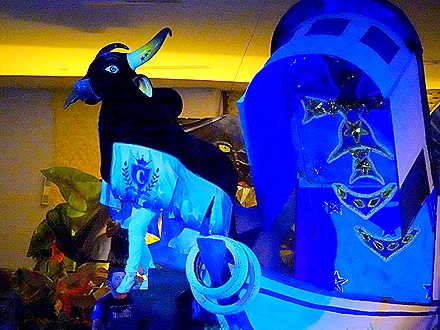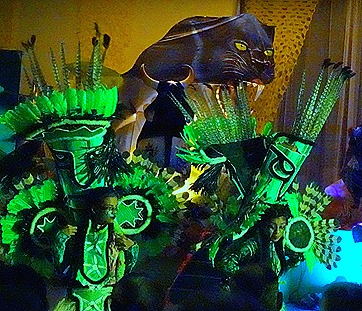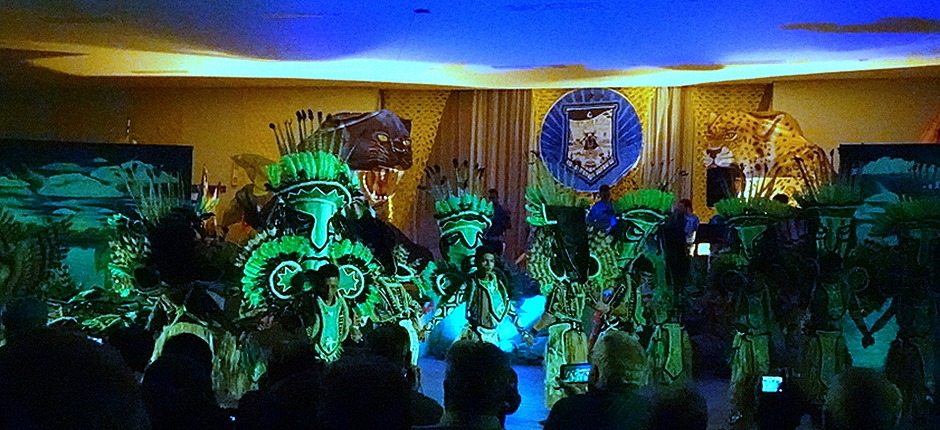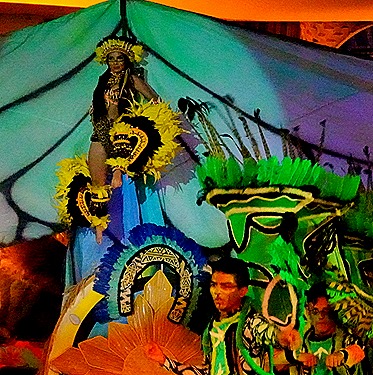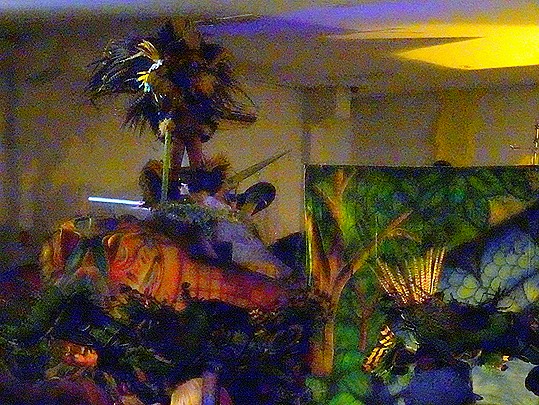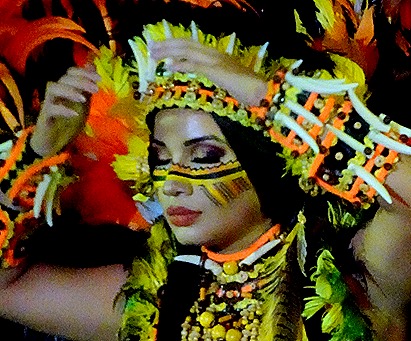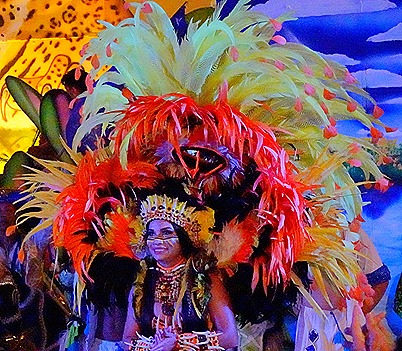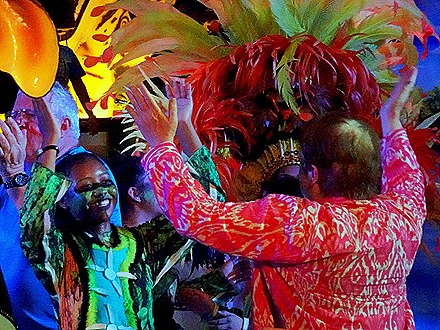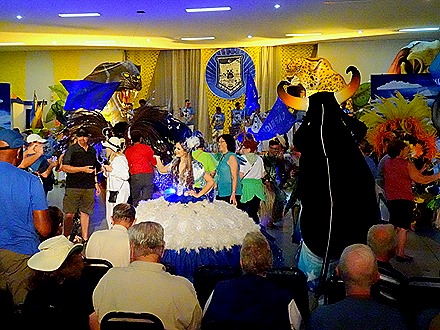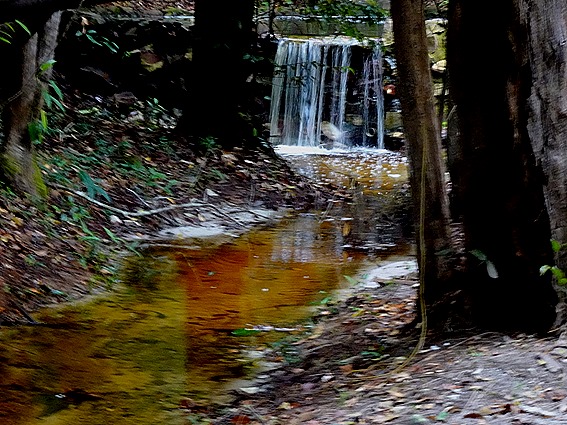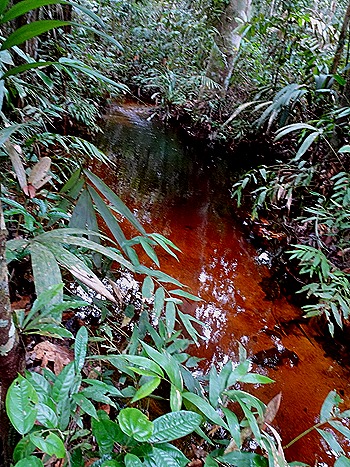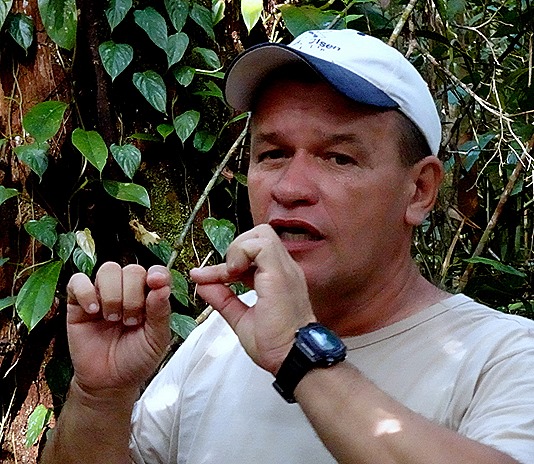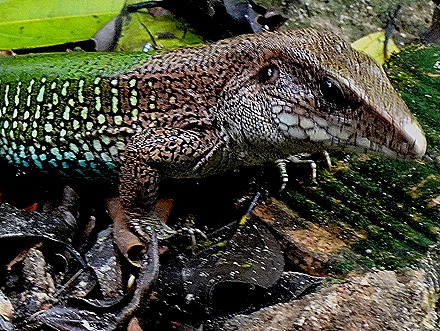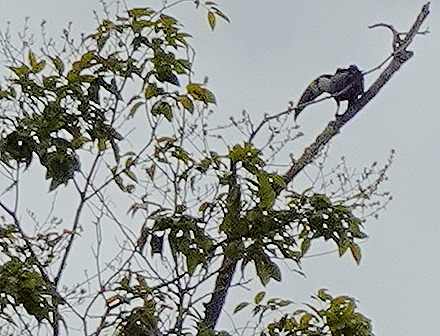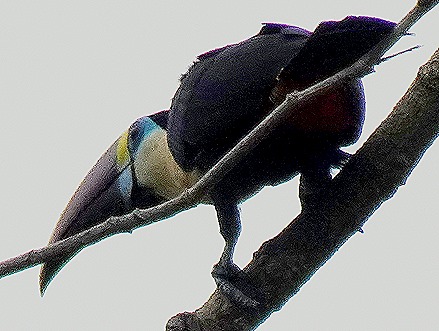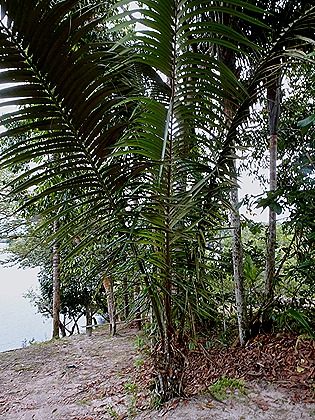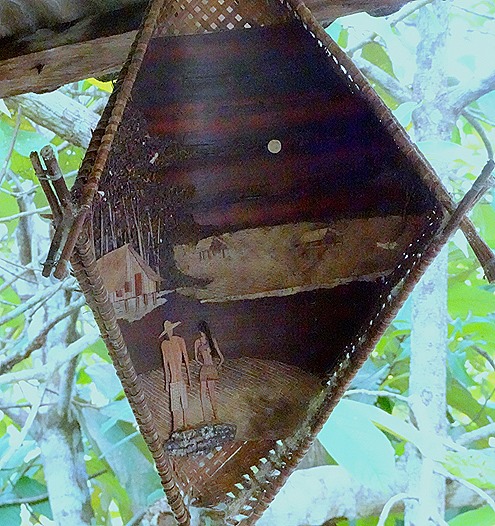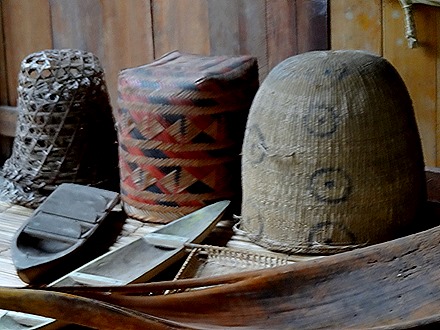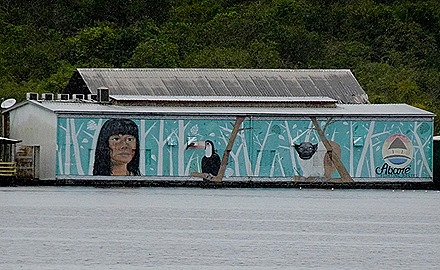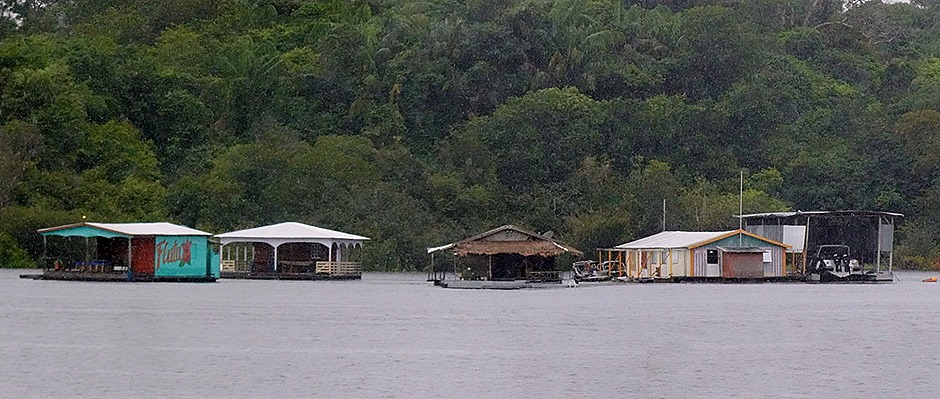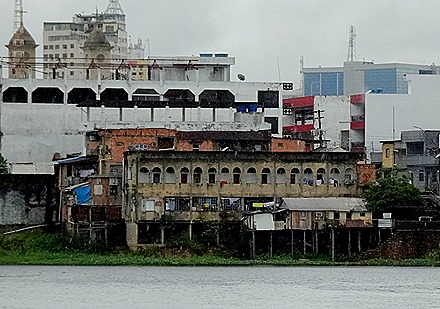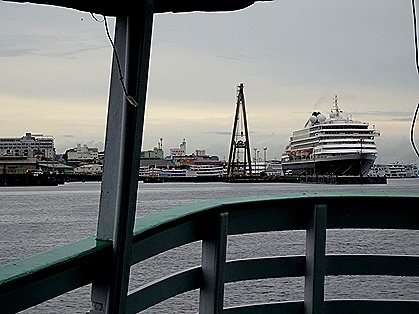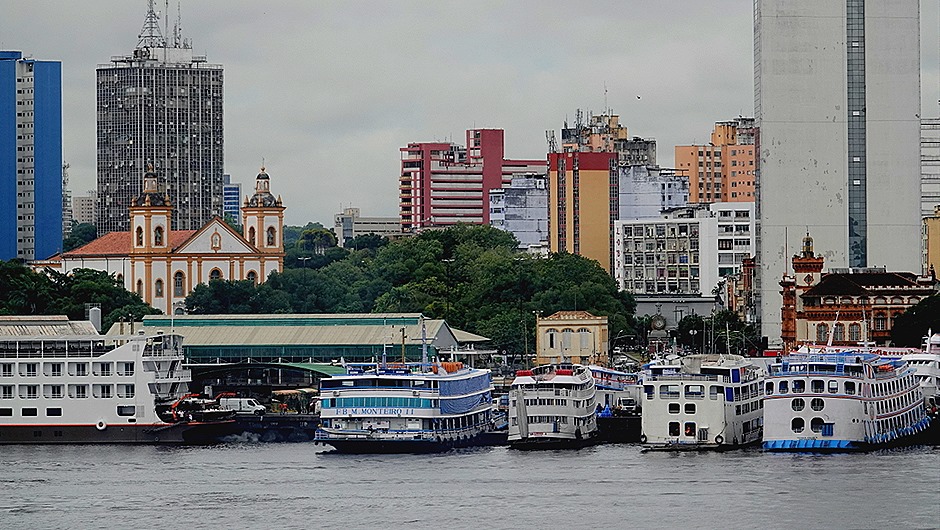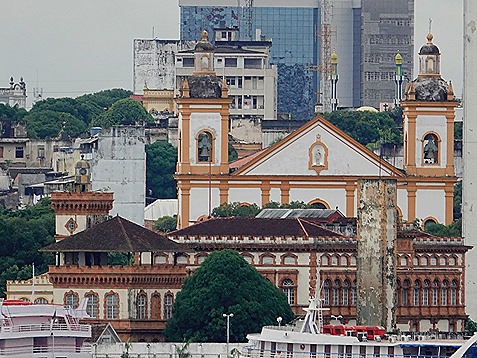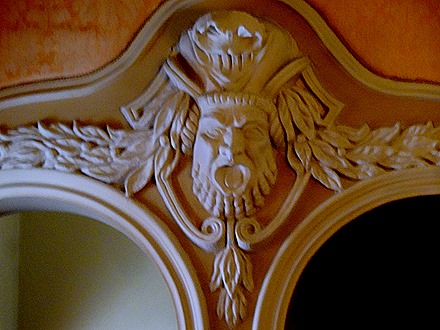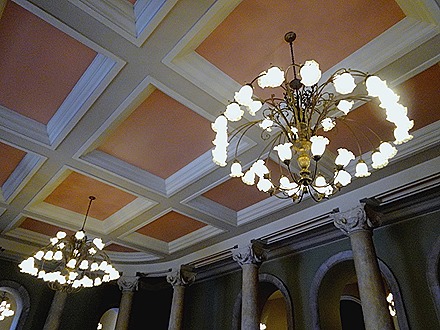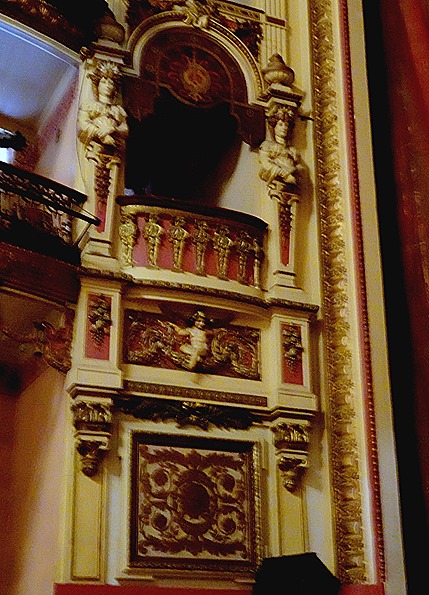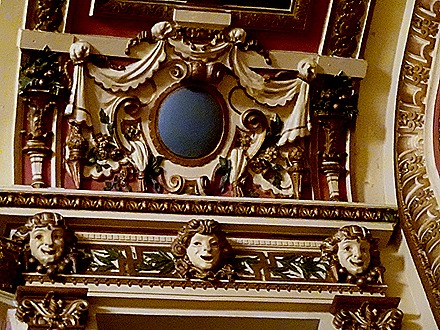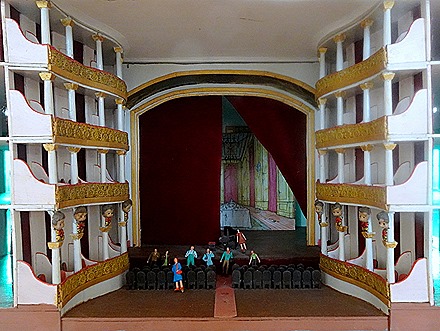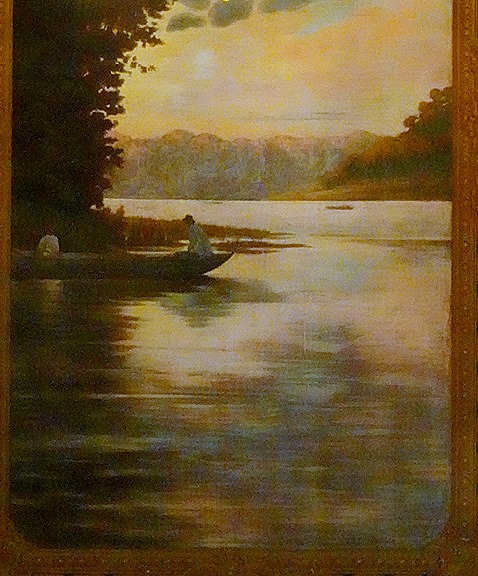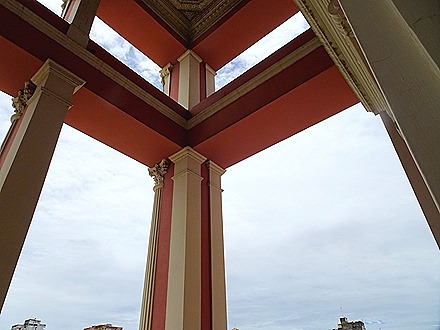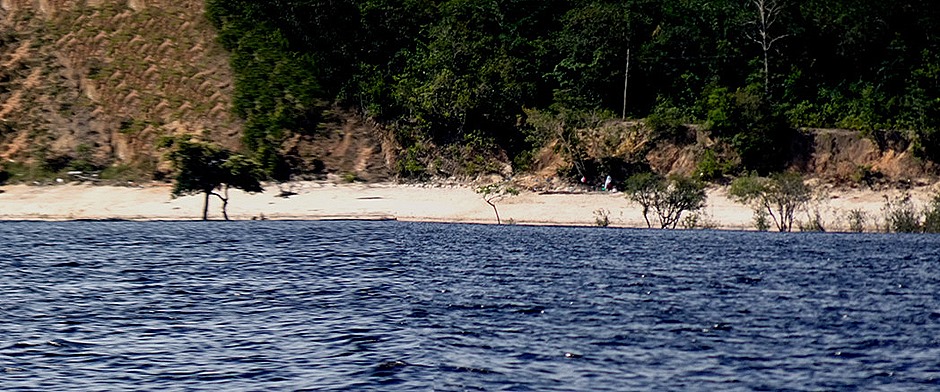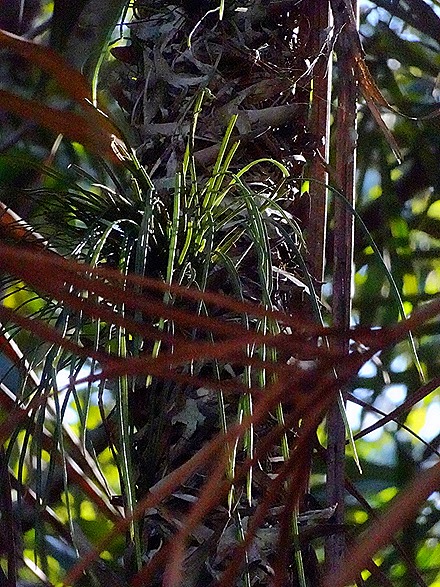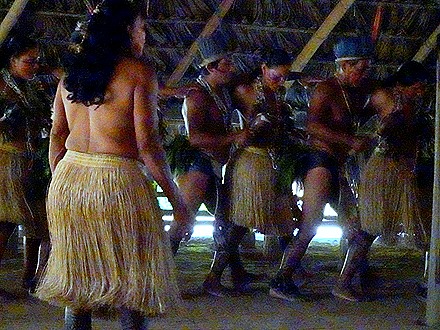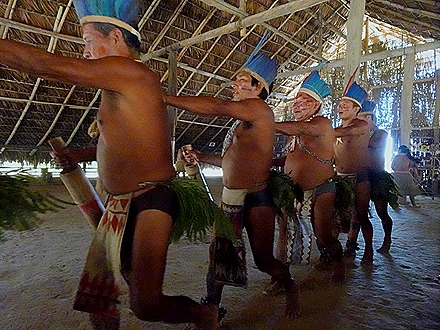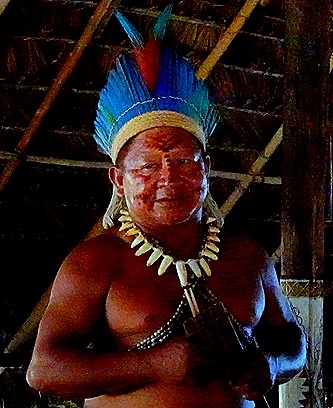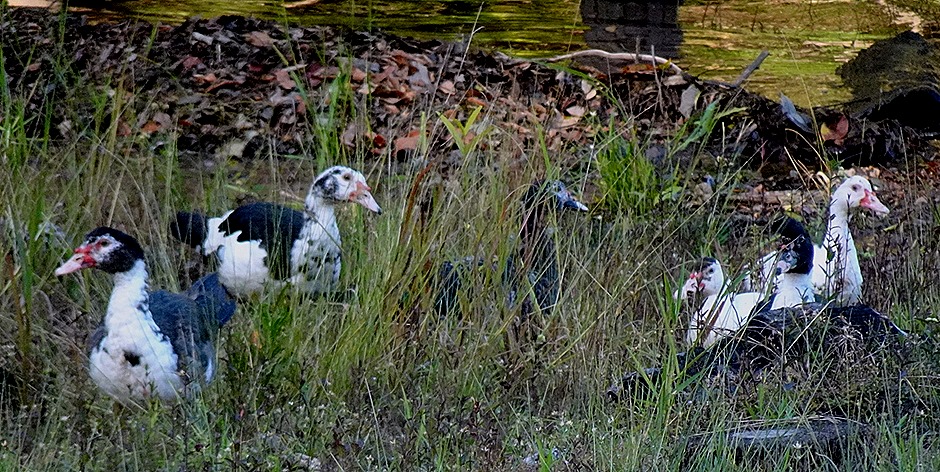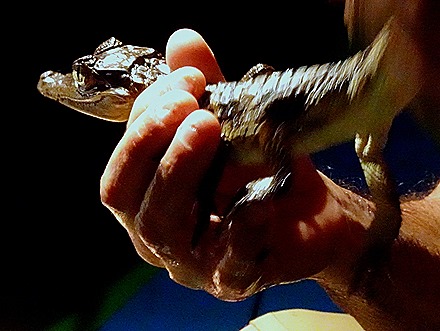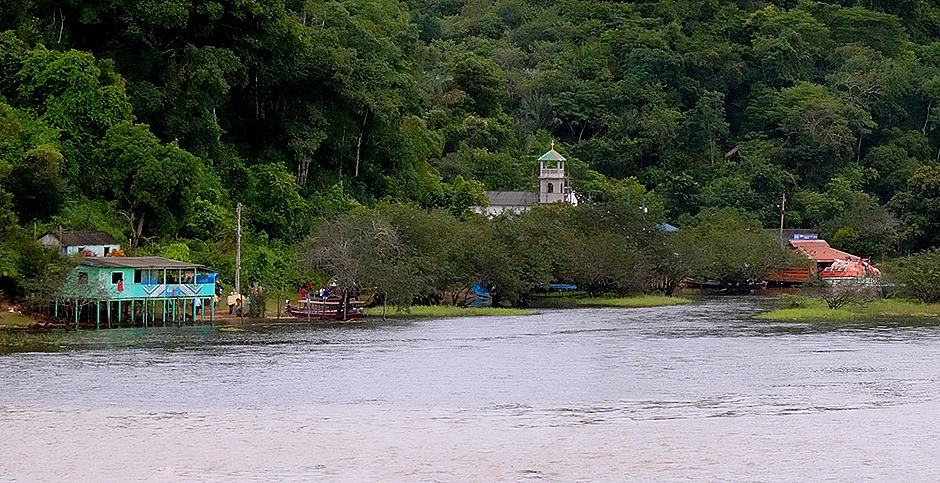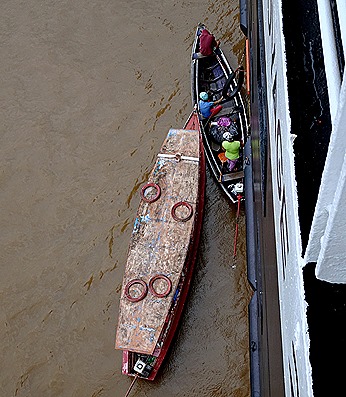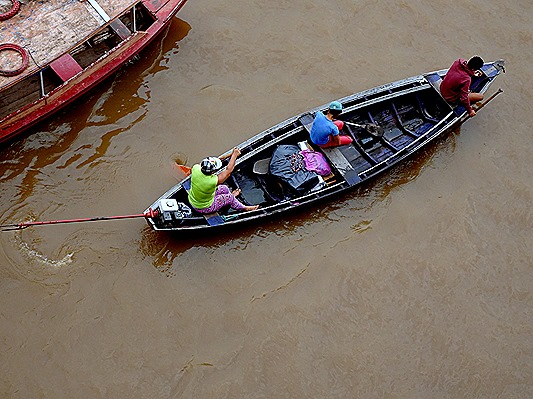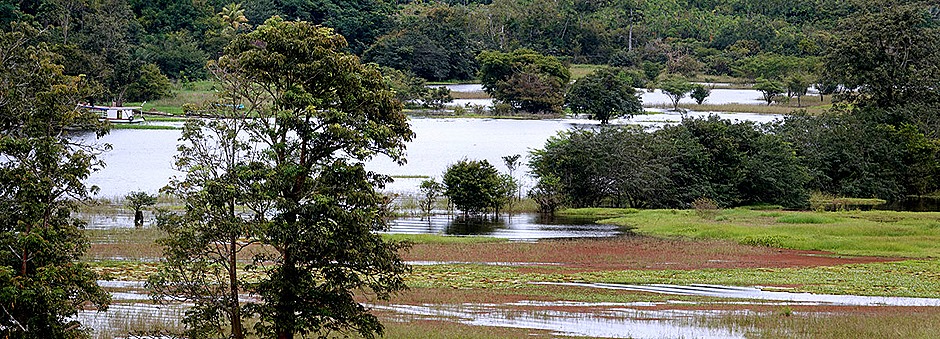Alter do Chão, Brazil (2019)
We were on the second tender to Alter do Chao on the morning of March 13. Founded by the Portuguese in 1626, Alter do Chao is on the Tapajos river about 10 miles from Santarem. It is a beach community with what is reputed to be one of the world’s best freshwater beaches, although when the Amazon is at high water those beaches disappear. We were joining another Gil Serique excursion, and it was a pretty long one, so we wanted to be sure we weren’t the last ones there. It turned out there was hardly anyone else on our tender and we had to wait quite a while in a nearly deserted town square at the end of the tender dock before the tour was ready to depart. The town square was surrounded by vendor kiosks that were starting to open when we arrived.



When everyone finally arrived we left in two small buses for the Tapajos National Forest. Unfortunately Gil had another group stopping in Santarem today so he didn’t accompany us, but his compatriots did a fine job organizing the tour and explaining everything. After a fairly long drive to the forest we stopped in what looked like a picnic area then began a lengthy walk in the forest. We saw many pretty flowers and a lot of very tall trees on this walk. We were given explanations about a number of these trees, but sadly we can’t remember most of them any more.





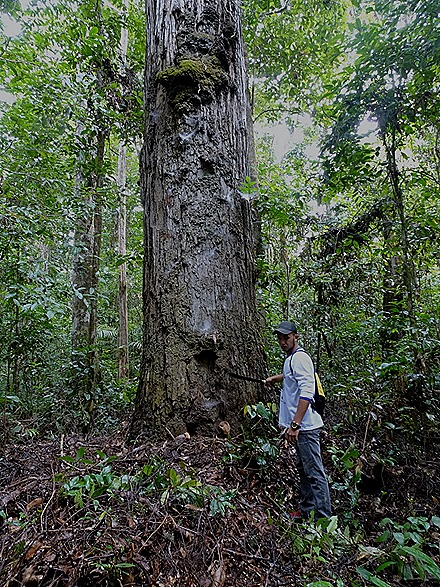

We walked through the woods, stopping at a giant ant or termite nest hanging from a tree. We passed what we think is a mahogany tree and some other trees we can’t identify.










Large, thick vines were climbing up trees and sometimes wrapping around themselves to get through open spaces. Some of them climb all the way to the canopy where they can get more light. As they spread out to other trees they also help tie the treetops together, helping to keep them from falling. We passed one big tree that had fallen. Other trees had what looked like long vines hanging from the tree tops all the way to the ground, but we think these were generated by older vines that had climbed up their trunks. These latter vines are quite strong; they held the weight of one of our guides swinging on them.




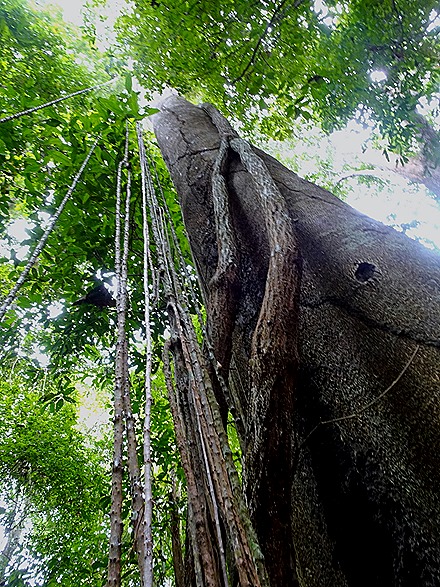


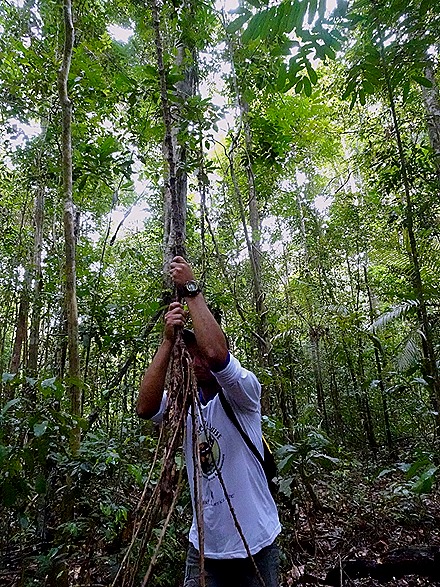













We returned to the picnic site, where the guides cracked and roasted some Brazil nuts over an open fire. We had some snacks at the picnic table, and someone found a turtle (tortoise?) who walked along the table.








After we ate & the rain stopped we went for another walk. This time we saw rubber trees, with the characteristic striped scars caused by tapping. They grow tall . . . if you have one (ficus) in your living room, keep an eye on it. We also visited a huge Kapoc tree, whose root structure spreading at the base of the tree was much larger than a person.









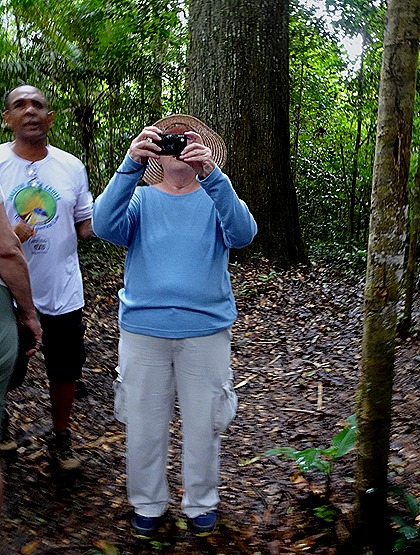




We left the woods in our bus and on the way we encountered a porcupine in the middle of the road. He didn’t seem to be going anywhere so we all got out of the bus to take a better look. He was a handsome fellow.



Even with all these people milling around looking at him the porcupine didn’t leave. This seemed odd until we got a look at his other side. There was a large wound just above his hip, which was probably making him weak and lethargic. Eventually he walked slowly away toward the woods, but with no chance of medical care he probably didn’t live much longer.



At the entry station for the national park we had to stop for some paperwork. While we were stopped one of the guides found a really large beetle (it looked a little like one of the aliens in the movie Men In Black). We have seen some large bugs on the ship while in the river, mostly moths, although on our first visit here in 2012 there were some much bigger ones. But this guy gets the award for Best in Show.





If you have been following this blog you know that rubber trees are native to the Amazon area and to nowhere else in the world. Europeans made great fortunes here from rubber, tapped from trees isolated throughout the forest by indigenous people who were effectively enslaved. But in 1876 Henry Wickham gathered and exported some 70,000 seeds to England under false pretenses (Gil Serique’s grandfather assisted him). The seeds were planted in Kew Gardens in London and about 2700 sprouted into trees, which the British sent mostly to Asia to establish their own rubber tree plantations. They far out-produced the Amazon, which still relied upon tapping isolated trees in the woods, and by the 1920’s the British had a virtual monopoly on the world’s rubber supply.
Henry Ford did not like paying the monopoly prices for the rubber he needed for car valves and gaskets so he decided to start his own rubber plantation in the Amazon. He obtained a very large tract of land on the Tapajos River about 190 miles from Santarem and proceeded to erect a plantation town there in 1928. The enterprise was a failure from the start, since Ford wanted a town modeled on the American midwest and required the workers there to eat the kind of food he favored and forgo everything he though was a vice. But the workers were Brazilians rather than Americans, who refused to conform to Ford’s vision. Moreover the rubber trees planted in tight rows like an American orchard fell victim to native blight and pests that did not exist in Asia; the trees isolated from each other in the forest did not have this problem. The town was closed down in 1934 without ever having sent a drop of rubber to America. An excellent book about this enterprise was published a few years ago called Fordlandia: The Rise and Fall of Henry Ford’s Forgotten Jungle City, by Greg Grandin (Gil was his guide to the area).
Ford tried again at a spot only 25 miles from Santarem, where the river transport was easier, the land was more level and the soil was very rich. He built another midwestern style town called Belterra, where he tried to accommodate local culture and customs more effectively. This new plantation was able to defeat the blight using more varied cultivars of rubber trees, but doing so was labor intensive and expensive. Although some small groves of rubber trees were established here, World War II diverted the Ford company’s attention to supplying the military and by the end of the war synthetic rubber was available, with which Belterra couldn’t compete. The Ford company sold both locations to the Brazilian government in 1945 for a fraction of what they had cost.
Fordlandia is much too far up the river to visit on a day trip, but we did visit Belterra after leaving the Tapajos national forest. The bus carried us over narrow unpaved roads to what is still a small midwestern style town filled with green and white painted bungalows surrounded by picket fences and gardens. We got out of the bus and walked down one of the main streets.

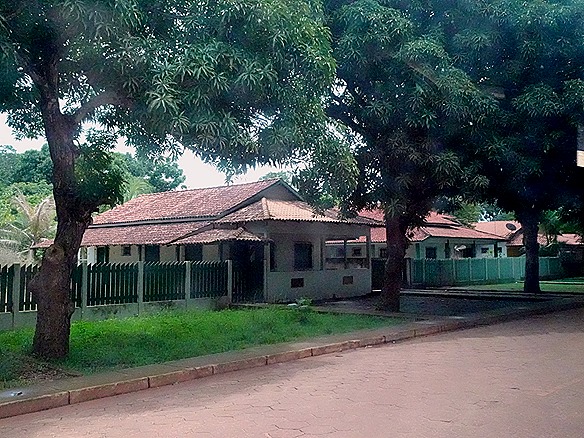







You can see that these buildings look nothing like the typical architecture of Brazil that we have seen before. In fact, Henry Ford never visited Brazil and these houses were designed by an American to look like the architecture with which he grew up in small town America. Each house is different, yet they are all of a single style and present a very homogenous appearance. It’s actually a little eerie coming upon this neat midwestern town so out of place sitting in the Amazon rainforest, almost like something from a Ray Bradbury story or a Twilight Zone episode. Although Ford’s enterprise here failed this is still a living town with a population between 1,000 and 2,000. Walking down the street we passed the town hall and a lot of rubber trees.







Leaving Belterra we drove on very bumpy unpaved roads back to Alter do Chao. Construction equipment was scattered along the road and we were told that they are in the process of paving it, which will be a big improvement. Gil’s house is by the water about a 15 minute walk from the tender pier. Unfortunately, since Gil was out guiding another group, he wasn’t there with us.



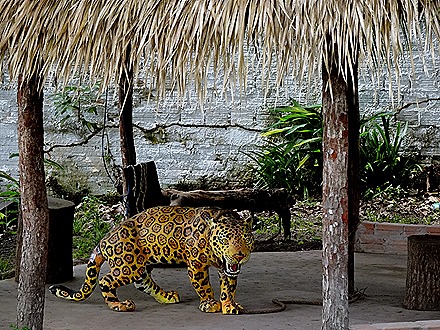
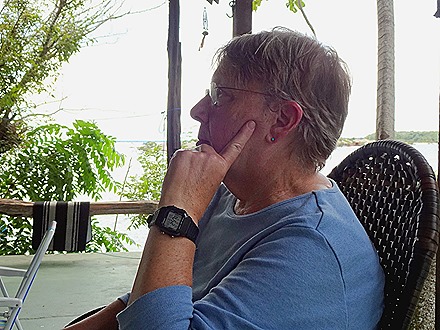
A few things to eat were set out on a table in the patio nearest the water, and a number of attractive flowers were planted on the grounds.
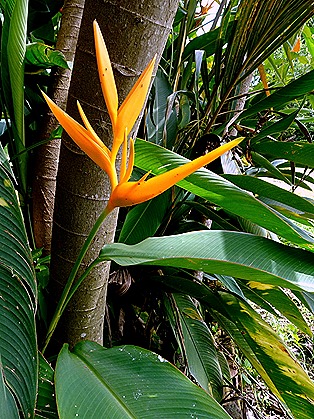



Most interesting, however, was the wildlife. There was an iguana, a white butterfly and a colony of leaf cutter ants, hard at work. Another interesting item was a bullet hole in a table on the covered patio. According to Gil, this was a door in his uncle’s house and the bullet was fired when the police came to arrest him.




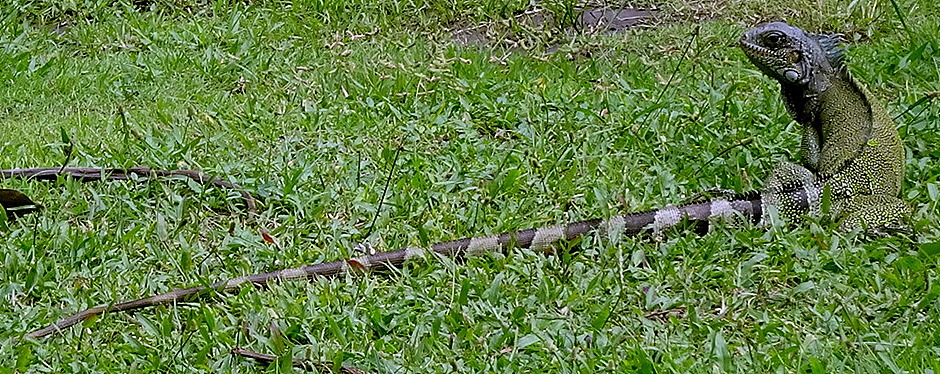


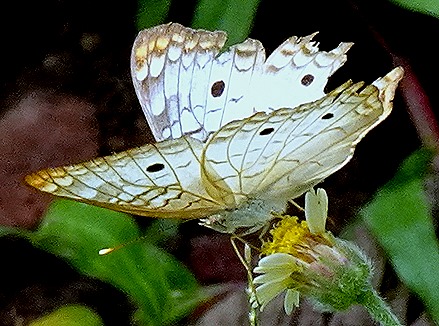

After leaving Gil’s house we wandered through the town. It has a pretty laid back beach town vibe, with mostly unpaved streets and few if any sidewalks. We passed the local church, Our Lady of Good Health, on our way to find a shop we had been told about which has a fantastic array of Amazonian wares. We walked back to the tender dock, where Mary phoned home before we tendered back to the ship.




And so ended our last stop in the Amazon, altogether an excellent adventure to be sure. We headed out into the Tapajos River on our way to the Amazon and then to the Atlantic.

Parintins, Brazil
We spent a relatively short day anchored in the Amazon outside Parintins, a small town of about 115,000 people located about halfway between Santarem and Manaus. No roads lead here so most visitors and commerce arrive by water. We had seen the town from across the river shortly after leaving Boca de Valeria on our way to Manaus.
Founded in 1852, Parintins sits on Tupinambarana island, which had earlier been inhabited by cabocios (indigenous or mixed race people escaped from Portuguese slave traders). It is famous for the Boi Bumba festival that takes place over 3 days in late June. The third largest festival in Brazil, after the Carnival in Rio de Janeiro and Salvador, the town is so packed with people that many sleep on hammocks on the boats that bring them here. We weren’t there in June, but when cruise ships stop here they put on a much smaller version, lasting only an hour or so, in the town’s convention center near the docks. Although the tickets are expensive (you can only buy them through HAL), this is pretty much the only reason to stop here, so we went.
After breakfast we took a tender to the town dock for a walk around the town before the performance It’s a pleasant town for a walk, if you disregard the oppressive heat.
The Boi Bumba is about a bull that is killed and later resurrected. On the streets were decorations reflecting this story.
We are still in Brazil so there were mosaic sidewalks and we also saw nice flowers in bloom
The most prominent building in the central district is the Cathedral of Our Lady of Carmo atop the hill, which can be seen from the river. It was built in the 1960’s and is pretty simple for a Catholic cathedral in South America.
The Boi Bumba show has open festival seating and you don’t want to arrive at the last minute. So we headed back toward the auditorium with our tickets. On the way we happened past a store with a number of colorful life size (or larger) animal sculptures, possibly papier mache, on the sidewalk. Two of them, the bull and the jaguar, resembled ones we saw later as part of the show. When we got to the auditorium we were surprised at the long line that had already formed down the street, which was lined with vendor stalls. But it turned out that the doors opened shortly after we got in line.
Once inside we found a seat, without much difficulty but about 6 rows back. Our friend Al was smart enough to arrive earlier and was in the front row, taking pictures of the crowd. The painted scenery and some large figures were in place awaiting the show. Finally, our port guide Heather stepped up, dressed in Amazonian attire, to introduce the show.
There are two teams of performers who compete at the festival for the best rating from the judges, Garantido (Red) and Caprichoso (Blue). The audience is divided in half as well, with one side supporting each team (and wearing red or blue team colors). Over three days each team gives three performances of 2.5 hours of continuous music, dance & singing. As we understand it, the story is always the same but each performance presents a different take on it. During each performance that team’s supporters in the audience join in, dancing and singing and waving flags while the half of the audience supporting the other team sits silently (sounds like an American State of the Union speech). In the end, the winning team and its supporters get to have a huge parade through the town and a huge party. This all takes place in the Bumbadromo, a 35,000 seat stadium built in the 1980’s just for the festival.
We got only a taste of all this, with fewer dancers (the festival performance involve some 80 performers each) performing in a much smaller indoor venue for a much shorter time. Our show was presented by members of the Blue team, Caprichoso. Nonetheless, even this truncated version was pretty spectacular. The costumes, makeup and the lights were all very colorful, the music (played by about half a dozen musicians on a stage behind the dancers) was loud and rhythmic and the dancers were extremely energetic. We understand that the dancers are all high school age or a year or two older. It was dark during the performance and everyone was moving constantly, so the pictures aren’t very sharp. But they still give an idea of what this was like.
There were several featured performers, mostly beautiful young girls. How does a small town like this turn out so many beautiful girls in this age group year after year? Most of the time they entered the stage over the top of one of the giant animals puppets; it was quite an effect. You can see in the pictures below that the dancers have changed into different costumes, this time looking like farmers. As we mentioned above, we were seated several rows back so you will see spectators’ heads at the bottom of many of these pictures.
While there apparently are a number of variations, the Boi Bumba story is about a poor ranch hand whose pregnant wife develops a craving for bull’s tongue. To satisfy it he steals and slaughters an ox bull, but it turns out to be the prize bull of the ranch owner. He flees into the forest to escape arrest, where he meets up with a shaman. The shaman invokes all the forest spirits and together they resurrect the bull. The ranch owner is overjoyed and stages a feast to celebrate the return of the bull and the ranch hand. No explanation was provided us about how the parts of the show we saw were related to the elements of the story. But we assume that the scenes with the dancers in straw hats have to do with the ranch and the giant animal puppets represent what happens in the forest. The featured dancer with the white half-mask in the next set of pictures may be the shaman.
From what we have read, Boi Bumba may date back to the mid 18th century in northern Brazil when it was a sort of defused form of social protest in which the poorer classes mocked the wealthy. It may have been brought to the Amazon area in the 1870’s by people escaping a drought to seek work as rubber tappers. There are boi bumba festivals all over Brazil but the one in Parintins is the biggest and best known. The Parintins festival began in 1965 and moved into the Bumbadromo two decades later. The music of the festival is a fusion of European, African and Indigenous styles.
It was explained before that this story centers on a bull that is resurrected from the dead. So in these next pictures you will see him, alive and dancing. The bull enters the stage in a boat.
You will notice that the women have donned fancy dresses, presumably for the final celebration of the return of the farm hand and the bull, and now another featured performer enters the stage underneath a giant butterfly puppet. She kisses the bull and sings to him.
After some more dancing in what looked like indigenous costume, another featured performer entered under what appeared to be giant insect wings, but we didn’t see the insect (maybe she was supposed to be the butterfly). A couple of the other featured performers returned to the stage and there was a loud standing ovation for the final bows.
When the show was over the dancers invited the spectators to come up and dance with them, which some of them did. Apparently this is also how the festival performance ends, with everyone in town joining for a huge party. Altogether, a great time was had by all.
Our departure was set for early afternoon, and there was really nothing to do after the performance that wouldn’t have been an anti-climax, so we headed out to the tenders and returned to the ship. We waved goodbye to Parintins in early afternoon and sailed on down the river toward our last stop on the Amazon river.
Manaus, Brazil (Day 2) (2019)
Rick got up very early on March 11 because our guide had offered an optional pre-dawn tour of the forest surrounding the lodge. It was really too dark to take good pictures, but we will show you what we have. It was pretty interesting. We saw several birds whose names Rick can’t remember now, some ant or termite nests and marmosets running through the tree tops.
Mary & the rest of our group joined the walk as we passed the lodge. We saw a waterfall and a stream whose water was red (presumably with iron) and a lot of flowers and trees (of course . . . it’s a forest). There was a huge mushroom that we think had medicinal properties and a tree sapling that may as well. There were huge vines curling up trees and a nest of ants the natives rub on their arms to repel mosquitoes. Marco demonstrated: he banged on the nest and a whole lot of ants ran out, then he grabbed a handful and rubbed them on his arm (yuck).
We went back to the open air dining room for a buffet lunch. Behind the buffet line was a large mural of an indigenous woman and there were other nice decorations, including a group of carved wood rays. Outside Rick encountered some small & quick lizards, one of which had lost most of its tail. A number of colorful flowers were planted outside the lodge.
Despite the threatening weather we boarded the boats for a trip to another village. As we left the lodge’s pier we saw a toucan high in a tree. Such colorful birds & it’s a wonder that huge beak doesn’t tip them over frontways. Walking up from the mooring at the village we passed among a number of nice flowers and trees.
Our stay at the village was cut short when the skies opened up and the whole area was drenched. Before that happened we saw two demonstrations. One fellow was preparing a root, possibly manioc, which he peeled with a scary looking knife then cooked in an oven. Another fellow was making rubber from sap. Apparently the sap is dripped onto a large stick then rolled back and forth over an open fire, adding more sap as it hardens. The work huts were decorated with fiber baskets and boxes, along with pictures on panels that looked like bark of some kind mounted on caning. The pictures were formed with some kind of onlay, not paint.
Back at the lodge, we checked out of our rooms and brought our luggage down to be loaded onto the boats for the final trip back to Manaus. It was still raining when we left. Just after leaving the pier we saw a large group of black birds that looked like vultures sitting menacingly on a bare tree. On the way to Manaus we saw a number of floating buildings – houses, restaurants, even a hostel.
As we approached Manaus we began to see beaches and buildings and boats on the shore. We also approached the Ponte Rio Negro, the only bridge in the entire Amazon basin. It is some two miles long but it doesn’t cross the Amazon River, just the Rio Negro. It was opened in 2011, to the joy of commuters and the consternation of environmentalists. This is a “cable-stayed” bridge, which means the central platform is supported by cables running to the top of a tower, a feature that is very evident.
Before we sailed away we were able to get some pretty nice views of Manaus from the top deck of the ship. The old Customs House (Alfindega) was constructed in England before being disassembled, transported by ship and rebuilt here in 1906. The Cathedral da Nossa Senhora da Conceicao was built in 1695 then rebuilt in 1878 after a fire. We could even see the cupola of the Teatro Amazonas from the ship looking over the cathedral. As we sailed away there were more river bank scenes and, a bit down river, a village of floating houses.
Manaus, Brazil (Day 1) (2019)
The morning of March 10 found us tied up at the floating dock in Manaus. Because the Amazon rises and falls some 40 feet each year the concrete dock is mounted on pontoons so it can rise and fall with the water. We visited Manaus for two days back in 2012:
https://baderjournal.com/2012/03/05/manaus-brazil-day-1/
https://baderjournal.com/2012/03/05/201204manaus-brazil-day-2/
Manaus is a city of more than 2 million situated a few miles up the Rio Negro from where that river joins with the Solimoes to form the Amazon proper. Founded in 1669 when the Portuguese built a fort here, it reached its apex as one of the richest cities in South America during the last decades of the 19th century as a result of the rubber boom. At that time the Amazon rain forest in this region was the world’s only source of rubber and the development of vulcanization for car tires drove worldwide demand for it. The boom ended in the early 20th century after a number of rubber tree seeds or seedlings were smuggled illegally to England (it was illegal to export them at all) and the British successfully transplanted them to Malaya (now Malaysia). By the time synthetic rubber was developed around the time of World War I Brazil had already lost its monopoly to the cheaper Asian rubber and Manaus fell on hard times. Its economy revived in the late 20th century as a manufacturing and trade center and it has prospered ever since. Situated in the rainforest almost 1,000 miles up river from the ocean, Manaus can be reached almost exclusively by air or water and it has a thriving river boat culture.
Since we had seen a lot of the city in 2012 we signed up for an overnight excursion to the Amazon EcoPark Jungle Lodge, which would give us a chance to visit the rainforest and some non-urban parts of the river. This map posted at the lodge shows the location up the Rio Negro northwest of Manaus (the brown river at the bottom is the Solimoes, considered part of the Amazon by Peru).
In the morning we boarded a bus for what amounted to a panoramic tour of Manaus (panoramic is a tour where you spend most of the time driving in a bus). We drove around the Mercado Municipal, a large market made in large part with iron and glass. Opened in 1882 (during the rubber boom), it was modeled on Les Halles in Paris. Gustave Eiffel was one of the architects. The iron structures were manufactured in Europe and sent here by ship. The side facing the city is built largely of masonry while the iron and glass side faces the river. Handicrafts are sold here, along with vast amounts of Amazon fish, meat, fruits and vegetables.
We drove past the Palacio Rio Negro, a mansion built by a German rubber baron in 1913. Later it housed the municipal government and today it is something of an art gallery. We toured it on our last visit to Manaus & it is quite lush and beautiful on the inside.
We drove around a bit, passing what looked like a favela neighborhood and a park paved in stone near a bridge.
Finally we came to the Teatros Amazonas, where we left the bus for a tour of the building. Opened on the last day of 1896 after 115 years of construction financed by rubber money, this is the icon of the city . . . a large pink opera house deep in the rainforest where you would least expect to find one. All the materials were imported from Europe and transported up the Amazon by ship: roof tiles from France, steel walls from Scotland, marble from Italy. Almost 200 chandeliers were imported from Italy to light the building, 32 of which are made of Murano glass. On top is a dome, designed to enable the painted curtain in the theater to be raised without folding or rolling. It is covered with 36,000 ceramic tiles imported from France and painted in the colors of the Brazilian flag.
The theater itself is shaped like a horseshoe around the stage. The ceiling is painted with a huge Murano chandelier in the center. Each of the pillars holding up the second tier is topped by a figure bearing the name of a composer or playwright. The upper levels are fronted by what looks like bronze railings and there are many other sculptural details giving the room a very lavish Belle Epoque appearance. The curtain, depicting the meeting of the waters, is from Tiffany and the ceiling was painted in Paris and assembled here after shipment.
In an interior lobby is a large table top model of the opera house made of legos. You just never know what you are going to see.
Upstairs is a large room that looks like a ballroom. It is surrounded by pillars and has a painted ceiling with glass chandeliers. There are paintings around the walls and the floor is made of 12,000 pieces of Amazon wood (cut and fitted in Europe we were told last time) laid without glue or nails (not sure what is holding them down). The floors in particular are quite impressive.
A large veranda was outside the ballroom, which had a nice view because it was on an upper level. We could see Praca Sao Sebastiao with a wavy mosaic pattern reminiscent of Copacabana beach in Rio de Janeiro (said to represent the meeting of the waters), and across from the Praca was the 1888 Igreja de Sao Sebastiao, which was reputedly built with only one tower to avoid a tax on two-tower churches. We could look down a stone drive to a square with shops where we shopped last time we were here. Originally the stones were covered with rubber to muffle the sound from carriage wheels and there are supposed to be a few of those left, although we didn’t see any.. And in the other direction was the veranda over the carriage entrance that had statues holding lights on each corner. After completing our tour we said goodbye to the opera house.
We boarded the bus for the journey to a harbor where we transferred to a covered motor canoe for the trip to the EcoPark. On the way we passed more favella looking neighborhoods. The EcoPark Lodge is situated on the Taruma River, a tributary of the Rio Negro. The landing at the park is on a white sand beach, fronted by the river rather than the sea. The lounge chairs under thatched umbrellas indicate that swimming is done here, although we never had time for anything like that. Our lodgings were in a two unit bungalow in the woods a substantial walk from the lodge, fortunately along well marked paths or we never would have found our way back. The room was fairly spartan but there was a nice small porch overlooking the jungle (although we never had time to use it).
After a buffet lunch we left in the boats for a visit to an indigenous village. This took us past beaches and rainforest until we reached the village dock. The Amazon area is at a high level (although it will get higher later) so the forest near the river was inundated with water. Some of the trees had Bromeliads (air plants) attached to their trunks. These plants attach themselves to the trees but do not harm them, drawing water and sustenance from the air.
We walked up to the main building, a wood and thatch affair open on the sides with pictures painted on the front of a sun, a moon, a dolphin and a snake. In the trees on the way we saw blue and orange Macaws and what looks like a Toucan.
In the main building we were entertained by a group from the tribe performing dances. Apparently none of them spoke English (no surprise in Brazil) since the chief’s speech was translated by one of the guides. Dressed in native costume, with topless women, grass skirts and feather headdresses, they performed several dances, one of which involved blowing on a long horn. Then they invited us to join them for the final dance. One couldn’t refuse when a young girl takes your hand and you can’t tell her in a language she can understand that you might have a mobility problem or would prefer to take pictures. One of these young girls took each of Rick’s hands for the dance so he was well protected, but there are no pictures of that for obvious reasons. Note that it was pretty dark in the building and everyone was moving, so many of the pictures are a little fuzzy.
After the show we walked around the village, made up mostly by open wood and thatch buildings. The main one appeared to be for cooking: it had an oven and a grill over an open fire where an armadillo was cooking. They showed us what we think are Brazil nut pods, one opened and empty and the other unopened., and there was a bird with a red face, possibly a Muscovy duck, nosing around on the ground (we saw one like it later with some other ducks).. After a while a macaw came in through a hole in the roof, apparently looking for a snack.
So as we leave the village the question arises, is this real or set up for tourists? We don’t really know, but our guess is that it is a little of both. We saw several other touring groups, so it seems pretty clear that this is a regular business for these people. And there was a souvenir stand in the main lodge we were encouraged to inspect, and we know that many of the items for sale were not made here because we saw some of the same things in stores elsewhere. And it didn’t appear that there was actual housing for this many people, so many of them must live elsewhere and come here and don costumes to perform. On the other hand, we think this was a real indigenous village that was probably here before the tourist industry got going and we have no reason to doubt that the dances and costumes and other things we saw are not authentic. So the answer seems to be that it is an authentic village that is now earning income from tourism.
Sailing back to the Lodge we spotted some apparently indigenous thatch huts on the edge of the rainforest and had some impressive views of distant Manaus over the river. Then later, walking from our bungalow to the open air dining room, we saw a beautiful red macaw in a tree near the building.
After dinner we boarded the boats once again for a nocturnal hunt for a caiman (a variety of alligator). We were out for quite a while with the guide on the boat’s prow using a spotlight to look among the waterlogged trees. He also jumped off the boat to walk into the woods looking for them. It was kind of spooky out there in the dark with his flashlight moving back among the trees; at one point we were stopped near what looked at first like an alligator but turned out to be an abandoned row boat. It was looking like all would be for naught when he finally nabbed a baby caiman. We took it back to the pier by the lodge where the other boatload of our people showed up too with another baby. We had a good look at them and also a lot of explanation about them from the naturalists. Then we went back to our bungalow to sleep before an early call in the morning and (hopefully) the little caimans were returned to where they were found.
Boca Da Valeria, Brazil (2019)
On the morning of March 9 we anchored near Boca Da Valeria for a short visit. This is a small indigenous village (75 to 100 people) in the rainforest at the confluence of the Valeria river with the Amazon.
This tiny village is now a common stop for cruise ships sailing up the Amazon and it is the only stop where you are likely to encounter an indigenous community. The story we heard, which may be apocryphal, is that this village was first visited a number of years ago when a cruise ship’s engine broke down when it was at this spot. To keep the passengers entertained they were tendered ashore at the village. The villagers, concluding that they were being invaded, all fled into the forest until the cruise passengers left.
After that arrangements were made with them to continue visiting. The money this has brought in has been beneficial to the village, which now has electricity, satellite TV and other modern conveniences like refrigerators and a school house. Since our first visit we noticed that the church has a new steeple and there is a new covered tender dock.
We had tendered ashore for a visit here on our first South America voyage in 2012, and it was certainly worth doing, since it the one place where you can see how the indigenous people live.
https://baderjournal.com/2012/03/01/boca-de-valeria-brazil/
But this is a very small place with only a little to see, so one visit is enough. And while the people are very friendly, commercialism has taken its toll. People for miles around come here when a ship is scheduled to stop in order to make a few bucks. They bring children, some dressed in feathered costumes and many carrying exotic animal “pets,” and each costs a dollar to photograph. Children greet you at the pier and one or two will take your hand to guide you through a village that only really takes a few steps, and expect to be paid. Home made crafts are for sale and there is a bar where you can buy a drink. While all this is understandable for people with few sources of income and it is hardly usurious, it certainly detracts from the experience. Add in a crowd of ship passengers in a tiny village and it is hardly the pristine rainforest village experience you hoped for when you stepped onto the tender. So we stayed on the ship for the few hours we were there and took some pictures from there.
As you can see in the pictures above, this is a river town and the Amazon is high enough this time of year to cause a lot of flooding. This is why most of the water side buildings are on stilts and we could see many trees growing out in the water. The locals offer rides in canoes (some open and some covered) to see giant water lilies and neighboring settlements for $5 or $10 per person. Some of them take their boats out to the ship, to try to sell things to passengers or just to ogle or even take smartphone pictures.
In addition to the village there were birds flying around, some pink dolphins (Mary saw them but Rick didn’t), and a nice rainforest coast where the hill came directly down into the water. This is still the Amazon, so of course there were floating lawns going past us. We headed off in early afternoon toward Manaus and that evening there was a nice sunset over the river.













